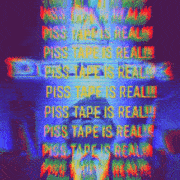|
Tias posted:Yeah, here's the original: https://www.pinterest.dk/pin/301811612508814761/ What a lovely note for me to jump in on, perfect. As you probably ken from the Buddhism and religion threads, I'm a Tibetan language translator. I've also spent most of my life in pagan adjacent spaces of both non-Christian religion and occultism, so naturally I've run into heathen sorts. I would like to learn more about runes! In my exposure, runes come in two "alphabets," the older of which has more characters and is generally what people in new age circles are on about as well as pagans and so on. I imagine the bulk of extant written poetry is in the younger form and the elder form is scanter just because, well, it's elder. I'm interested in how the writing here works, the importance of the writing itself in magics of various sorts, and so on. Today most of what I see when I hear about "bindrunes" are essentially a form of sigilization and likely quite modern, but I could be mistaken in that. After all, sigilization itself is nothing new, what with seals of spirits being made from kamea at least as early as the the early renaissance, though of course that's also relatively modern compared to when the futhark alphabets would've been in use as I understand it? They track like an alphabet, and so one can imagine things being written with them just as they might be written with English letters, yeah? And there are unique letters that persist in Norse today as I understand it (the troublesome "th" for example). So, from a reconstructivist perspective, how do we see them used in magic? What constitutes a "bindrune" when removed from the context of modern pagans taking any ol' pantheon they like and jamming it into the Golden Dawn's stuff? Much of modern paganism is reskinned Gardnerian Wicca which is itself just reskinned Rosicrucian stuff which is reskinned Co-Masonry and on and on down the line of derivation, and then in true Masonic form, taking that and going "welp, this obviously dates to [a super ancient event]." Obviously with an oral tradition being extinct and only having the artifacts to work with, can we see obvious magical deployments of runes and such? In other sectors of the occult community it's become popular to flag any given practice one does that lacks a historical precedent but comes from a personal realization as "unverified personal gnosis." This, to me, is a great development: it divorces the claim from concerns about it claiming to have a kind of historicity that isn't necessarily present, while still leaving room for a person to practice whatever they want (after all, if the gods are living gods then why would their traditions not be living traditions that evolve in relation to the cultural moment? Something the Mormons do well enough, at least, for example). Do we see this happening much within heathenry, or is it still mostly shrouded in mostly bullshit claims based on vague hunches and throwing the Norse skin over the generic neopaganism? Another example of what seems to me like a reskinned practice is the throwing of runes or casting of runes based on their names as a form of divination. The style of casting them is not dissimilar from any other style of casting things, but the way it's read is essentially "Tarot but we're going to look at a character instead of a picture on a card" and, well, seems extremely modern. Again, casting lots is a practice with a lot of history to it but that form of divination is not; historical divination practices tended not to be much about esoteric whatever and instead tended to be very specifically about very practical matters. For that kind of divination, pulling symbols out of a bag are uncommon. You don't want much interpretation when you're asking straightforward questions. So, do we actually know anything historically about divination via runes, or is this a modern confabulation? (Not that the modern confabulation is a bad thing, I'm not saying that, but this thread is about the more historical stuff and I'd love to know more about that in particular). And then there's the "meanings of the runes," in the sense that the runes have names and the names seem to be translatable. E.g. you have "wealth," "iron," "need," "ice," and so on. When you're translating runes, do the meanings in this sense have any linguistic functions? Or are they just names for the symbols that represent the phonemes and you transliterate it like an alphabet, and those happen to be one letter words? For example in Tibetan the letter "ka" is also the word "ka" which is the word "mouth," but to my knowledge the symbol and that word are unrelated except that the word is spelled that way. You might use it for a pun, but "ka" in the kakhaga does not mean "mouth," it's just a letter, and that letter happens to mean "mouth." Same as nobody would say "I" in the alphabet means the pronoun. Do the runes' names serve some function in historical magic application that we know of? Or is that also a modern thing? Basically, I'd love to hear about bindrunes, the use of runes in magic, and so on.
|
|
|
|

|
| # ¿ May 22, 2024 16:23 |







